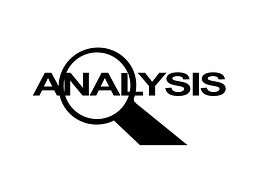Why Business Analysis Planning and Monitoring Matters
Effective business analysis does more than just collect requirements—it creates a repeatable, measurable process that drives better decisions. A solid business analysis plan gives you a roadmap; monitoring that roadmap ensures you stay on track, meet stakeholder expectations, and continuously improve.

Core Components of a Business Analysis Plan
Four inter‑related parts make up a complete planning and monitoring framework:
- Planning the business analysis approach
- Stakeholder analysis
- Organizing business analysis activities
- Managing and monitoring performance
1. Planning the Business Analysis Approach
This section defines how you will conduct the analysis. Consider:
- Project complexity and scope
- Preferred techniques (interviews, workshops, modelling, etc.)
- Time‑boxing of tasks and milestones
- Deliverable format (documents, dashboards, wire‑frames)
Tip: Use a Business Plan Template as a starting point for outlining goals, assumptions, and success criteria.
2. Stakeholder Analysis
Identify every person or group who influences or is impacted by the solution. Capture:
- Name, role, and contact details
- Level of influence and interest
- Key responsibilities in the analysis process
- Communication preferences
Document the results in a simple matrix (see the checklist below).
3. Organizing Business Analysis Activities
Break the work into manageable activities. For each activity, estimate:
- Duration and effort (hours or days)
- Required resources (people, tools, data)
- Dependencies on other tasks
- Acceptance criteria
Group related activities into phases such as Discovery, Validation, and Delivery. This helps you track progress and spot bottlenecks early.
4. Managing and Monitoring Performance
Set clear Key Performance Indicators (KPIs) for your analysis work. Typical KPIs include:
- Requirements coverage (%)
- Stakeholder satisfaction score
- Variance between estimated and actual effort
- Number of change requests after sign‑off
Use a visual dashboard (e.g., an Financial Dashboard Excel style report) to review these metrics weekly and adjust the plan as needed.
Industry‑Specific Quick Examples
Healthcare
- Approach: Use HIPAA‑compliant interview guides.
- Stakeholders: Physicians, nurses, compliance officers, patients.
- Activities: Clinical workflow mapping, regulatory gap analysis.
- KPI: Rate of compliance issues identified vs. resolved.
Retail
- Approach: Combine in‑store observation with POS data mining.
- Stakeholders: Store managers, supply‑chain partners, shoppers.
- Activities: SKU rationalization, omnichannel journey mapping.
- KPI: Average order value uplift after requirement implementation.
Action‑Ready Checklist
| Step | What to Deliver | Tools / Templates | Owner |
|---|---|---|---|
| 1. Define Approach | Analysis approach document, technique list | Business Plan Template | Lead BA |
| 2. Stakeholder Matrix | Stakeholder register with influence/interest scores | Simple Excel matrix (downloadable) | Project Manager |
| 3. Activity Schedule | Work breakdown structure, Gantt chart | Marketing Plan Template (timeline section) | BA Team |
| 4. KPI Dashboard | Weekly performance dashboard | Financial Dashboard Excel | Performance Analyst |
Next Steps
Start by downloading a ready‑made Business Plan Template. Customize the sections above to fit your project, populate the checklist, and begin tracking your progress from day one.
Need a deeper dive? Explore our 101 Ways to Save Time & Automate Workflows guide for additional tools that can streamline your analysis process.






























